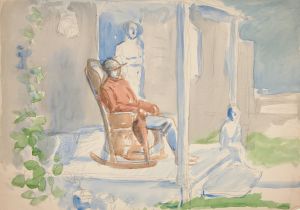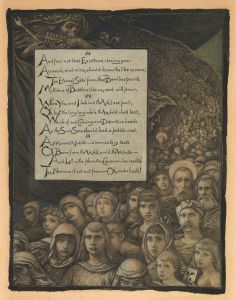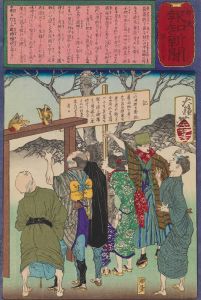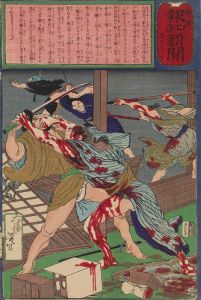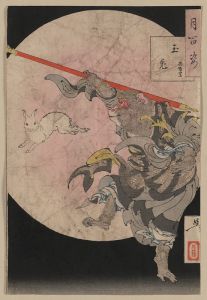
Tajima Seitarō Murders His Wife When She Refuses to Return to Him
A hand-painted replica of Tsukioka Yoshitoshi’s masterpiece Tajima Seitarō Murders His Wife When She Refuses to Return to Him, meticulously crafted by professional artists to capture the true essence of the original. Each piece is created with museum-quality canvas and rare mineral pigments, carefully painted by experienced artists with delicate brushstrokes and rich, layered colors to perfectly recreate the texture of the original artwork. Unlike machine-printed reproductions, this hand-painted version brings the painting to life, infused with the artist’s emotions and skill in every stroke. Whether for personal collection or home decoration, it instantly elevates the artistic atmosphere of any space.
Tsukioka Yoshitoshi (1839–1892) was a prominent Japanese artist known for his work in the ukiyo-e genre of woodblock printing and painting. One of his notable works is "Tajima Seitarō Murders His Wife When She Refuses to Return to Him," which is part of his series "Twenty-Eight Famous Murders with Verse" (Eimei nijūhasshūku).
The series "Twenty-Eight Famous Murders with Verse" was created between 1866 and 1867 and is known for its dramatic and often violent depictions of historical and legendary events. Yoshitoshi's work during this period reflects the turbulent times of the late Edo period and the early Meiji era, characterized by social upheaval and the transition from feudal Japan to a more modern state.
"Tajima Seitarō Murders His Wife When She Refuses to Return to Him" is a striking example of Yoshitoshi's ability to capture intense emotion and drama. The print depicts a tragic domestic scene where Tajima Seitarō, a samurai, is shown in the act of murdering his wife. The composition is dynamic, with a strong sense of movement and tension. Yoshitoshi's use of bold lines and vivid colors enhances the emotional impact of the scene.
The story behind the print is based on a historical incident. Tajima Seitarō was a samurai who became enraged when his wife refused to return to him after leaving their home. In a fit of jealousy and anger, he murdered her. This act of violence is depicted with a sense of immediacy and raw emotion, characteristic of Yoshitoshi's work.
Yoshitoshi's portrayal of such scenes was not merely for shock value; it also reflected the complexities of human nature and the darker aspects of society. His work often included accompanying verses that provided additional context or commentary on the depicted events. These verses were written in a classical Japanese poetic form, adding a layer of literary depth to the visual art.
The print "Tajima Seitarō Murders His Wife When She Refuses to Return to Him" is significant not only for its artistic qualities but also for its historical context. It provides insight into the cultural and social issues of the time, including the role of samurai, the nature of domestic relationships, and the consequences of extreme emotions.
Yoshitoshi's work, including this print, has been studied for its artistic innovation and its reflection of the changing times in Japan. His ability to blend traditional ukiyo-e techniques with a modern sensibility has made his work enduringly popular and influential. "Tajima Seitarō Murders His Wife When She Refuses to Return to Him" remains a powerful example of his skill in capturing the complexities of human experience through art.





